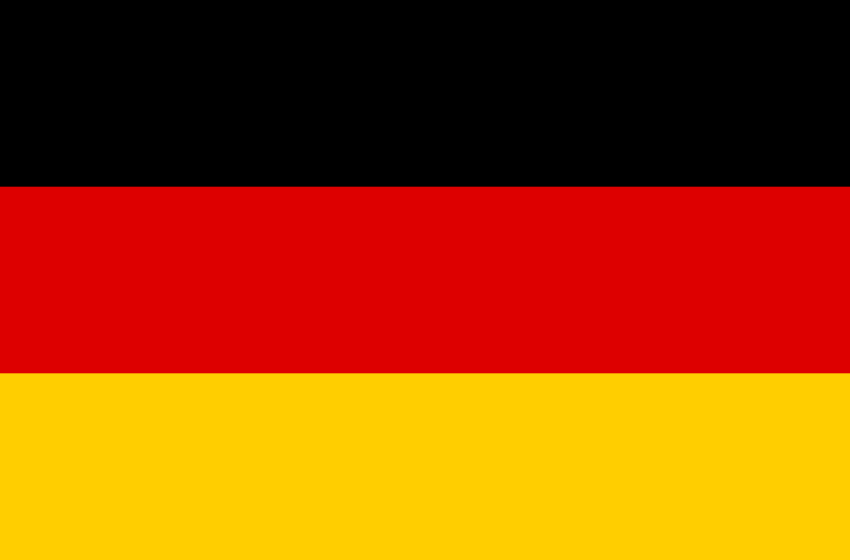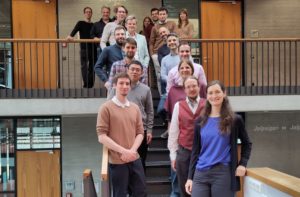Germany: Icy Solar Heat Storage
January 21, 2014
German engineering company Ökoplan has built a 1,586 m³ ice storage in one of Hamburg’s residential areas to save solar heat from summer for winter. Parts of the heating system have already begun operating; the start of the ice storage is scheduled for October 2014. The chiller with a thermal output of 600 kW will then run like a heat pump to extract the heat from the water in the ice storage. The operation temperature of the storage is between +20 and 0°C, also including the latent heat which becomes available when the water freezes. The solar heat will be used to melt the huge ice block between April and October in order to regenerate the storage during summer.
The ice storage by German company isocal, the 420 m² of vacuum tube collectors by Swiss manufacturer AMK Solac and the absorption chiller by Colibri from the Netherlands are part of the heating system of 28 multi-family houses with 500 flats owned by building cooperative Eisenbahnbauverein. Ökoplan chose vacuum tubes from AMK Solac as they were the only ones which had no difficulties with condensation when cool water is fed from the ice storage and they are also resistant to possibly occurring temperature shocks.
The ice storage is a huge concrete basin with a heat exchanger for regeneration running along the outer walls and a heat exchanger for heat extraction in the centre, so the freezing occurs from the centre to the outside and from the bottom to the top. At the minimum temperature, there is still about one metre of water between the ice block and the outer walls. There is air at the top of the storage to have room for the expanding ice.
Solar collectors keep working at night
The heating network has been divided into three construction units, each including between 5 and 14 multi-family buildings, one solar plant and one gas boiler. The heating system of any of these three units can, for the most part, operate independently. Every building has its own buffer tank connected to all heat sources.
During summer days, the heat from the solar collectors is mainly used to directly generate hot water in fresh water stations in every flat. When there is no need for hot water, the heat is stored in the buffer tank for the day. This operation mode allows the vacuum tube collectors to achieve a solar yield of 510 kWh/m²*a, according to measurements at the solar plant of the first constructed unit, which has already completed its first year in operation.
When the buffer tank is filled up, the collectors supply the heat to melt the ice storage. The solar collectors continue running even after sunset. As the temperature of the ice storage drops below ambient air temperature in early summer, the collector field works as a heat exchanger at night by using outside air. This increases the annual solar yield to more than 750 kWh/m² of collector area, according to TRNSYS simulations.
In addition to the vacuum tube collectors, there are 500 m² of special absorbers, which work similarly to pool absorbers and also collect energy day and night from the ambient air to regenerate the seasonal ice storage.
The absorption chiller is driven by a gas-fired boiler with thermo oil as the heat transfer medium and consumes 300 kW of thermal power to generate 600 kW of thermal heat output. All 28 buildings are connected to the heating network, so that one absorption chiller and ice storage can provide heat to all buildings. During one year, according to TRNSYS simulations, the absorption chiller will provide 85 % of the energy needed for heating and domestic hot water, while 10 % come directly from the solar collectors and 5 % from the gas boilers.
Because the absorption chiller uses ammonia, the plant requires a special permit. As the storage is the first of its kind, an authorised expert appointed by the TÜV Nord has specified certain individual safety criteria and is supervising the entire planning and construction process. The permit will be issued after a final inspection before the chiller starts in March 2014. Ammonia is used because it does not contribute to global warming.
So far, Ökoplan has completed more than 15 projects with isocal’s ice tank. Not all of them include solar collectors: Some use the heat from cooling the building in summer to regenerate the storage tank.
Before the installation of the new heating system, heating and hot water were supplied by electricity. The new concept reduces energy costs by 70 %, Bernd Schwarzfeld from Ökoplan says. Investment was around EUR 5 million, with 700,000 EUR support from the German KfW banking group, the Hamburgische Investitions- und Förderbank (IFB Hamburg) and the Ministry of Urban Development and Environment, Hamburg.
More information (German only):
Ökoplan Büro für zeitgemäße Energieanwendung: http://www.bze-oekoplan.de (in German)
isocal: http://www.isocal.de
AMK Solac: http://www.amk-solac.com


